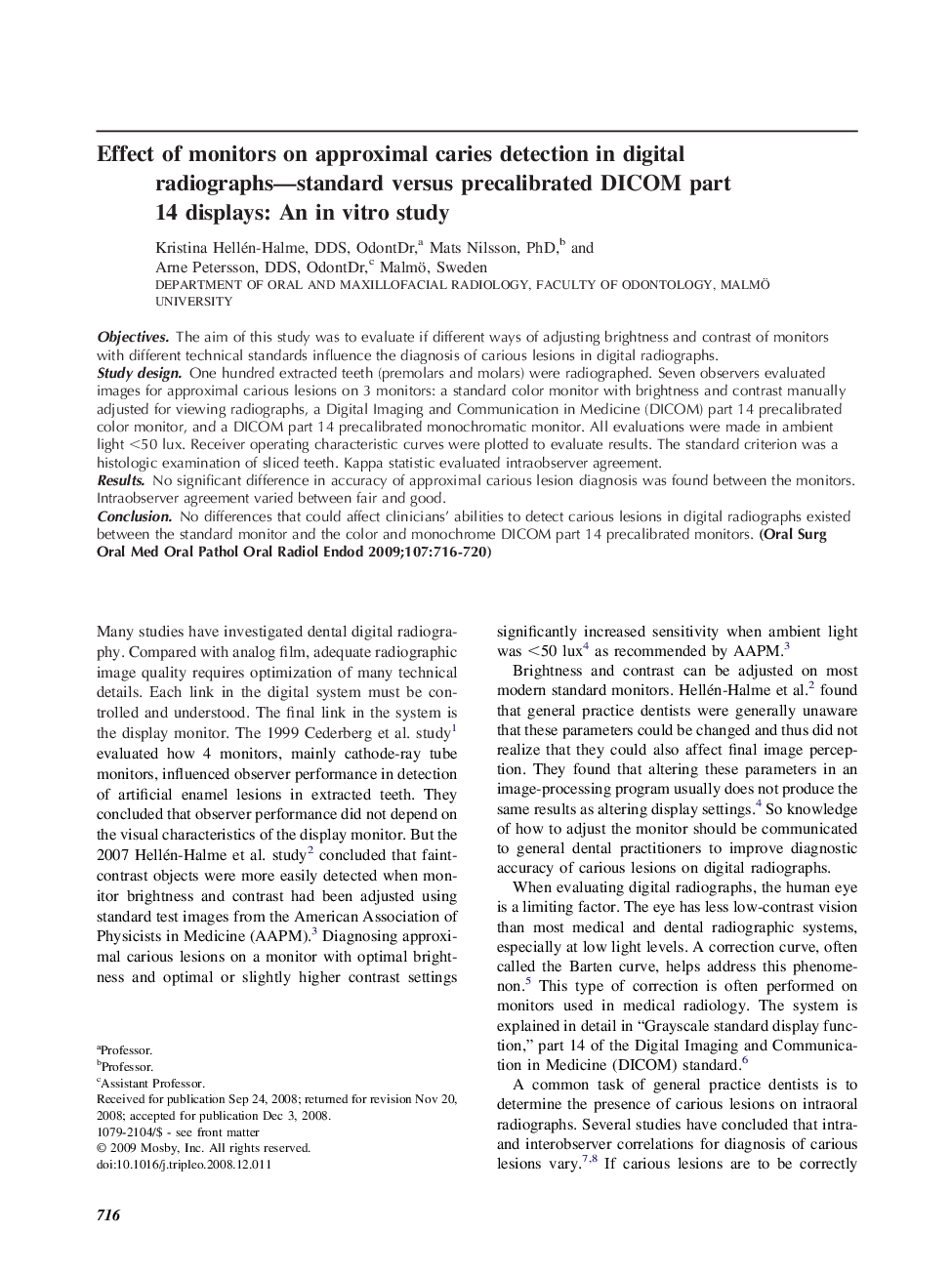| Article ID | Journal | Published Year | Pages | File Type |
|---|---|---|---|---|
| 3168290 | Oral Surgery, Oral Medicine, Oral Pathology, Oral Radiology, and Endodontology | 2009 | 5 Pages |
ObjectivesThe aim of this study was to evaluate if different ways of adjusting brightness and contrast of monitors with different technical standards influence the diagnosis of carious lesions in digital radiographs.Study designOne hundred extracted teeth (premolars and molars) were radiographed. Seven observers evaluated images for approximal carious lesions on 3 monitors: a standard color monitor with brightness and contrast manually adjusted for viewing radiographs, a Digital Imaging and Communication in Medicine (DICOM) part 14 precalibrated color monitor, and a DICOM part 14 precalibrated monochromatic monitor. All evaluations were made in ambient light <50 lux. Receiver operating characteristic curves were plotted to evaluate results. The standard criterion was a histologic examination of sliced teeth. Kappa statistic evaluated intraobserver agreement.ResultsNo significant difference in accuracy of approximal carious lesion diagnosis was found between the monitors. Intraobserver agreement varied between fair and good.ConclusionNo differences that could affect clinicians' abilities to detect carious lesions in digital radiographs existed between the standard monitor and the color and monochrome DICOM part 14 precalibrated monitors.
